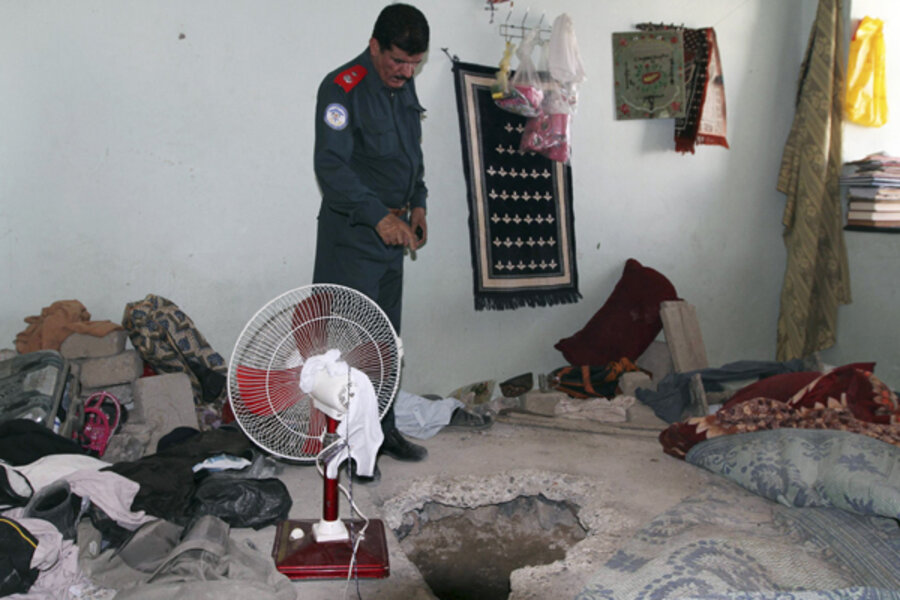Taliban tunnel frees Kandahar prisoners, in blow to NATO and Afghan forces
Loading...
| Kabul, Afghanistan
In one of the most elaborate prison breaks in recent Afghan history, the Taliban managed to free hundreds of inmates from Kandahar’s central prison in the early hours of Monday morning through a 1,180-foot tunnel.
The mass escape – reportedly not discovered until hours after it was over – has further shaken Afghans’ faith in their government, and intensified concerns that the freed prisoners will bolster the insurgency in Kandahar.
The escape is a particular blow to NATO and Afghan forces who have ratcheted up their campaign against the Taliban during the past year and hoped to expand their gains this summer. While NATO forces captured many of the Taliban fighters who were being held in the prison, the escape cast doubts on the ability of Afghan forces preparing to take more responsibility for providing security.
“I would call this a shameful incident for the Afghan government,” says Ahmad Shah Khan Achakzai, a former member of parliament in Kandahar. “It is impossible for the Taliban to get 500 men out of prison without anyone’s help. I believe there are some people from the prison or the government who gave the Taliban support.… It’s now clear to everyone how corrupt the government is.”
The prison held about 1,200 prisoners who were divided into political and criminal sections. All those who escaped were from the political section, which mostly housed people who had been arrested for involvement with the insurgency.
While the Taliban says it freed 541 inmates, government officials say 475 people escaped. About 30 inmates are reported to have voluntarily stayed in the prison.
Of those freed, Taliban officials say 106 were commanders for the militant organization. However, Afghan authorities keep most high-level Taliban detainees at facilities in Kabul or in jails operated by the national intelligence service, so it is unlikely that any prominent Taliban members escaped.
Militants apparently began digging the tunnel around five months ago, hollowing out a passage that extended 360 meters (nearly 400 yards) underneath a major highway and police checkpoints. Police officials said that the insurgents dug the tunnel from the outside the prison.
According to a Taliban statement, only three prisoners had advance knowledge of the escape plan. Inmates began moving through the tunnel at 11:00 p.m. on Sunday night and finished at 3:30 a.m. on Monday morning. Suicide bombers and other militants reportedly waited to attack if the operation was discovered, but were recalled after the completion of the mission.
“The mujahideen who participated in this operation called it a big success. The enemy did not even realize or discover that we were conducting this operation,” said Taliban spokesman Qari Yousef Ahmadi in a statement on the group’s website. “This most interesting aspect of this incident is that the operation ended at 3:30 a.m., but the enemy did know about it until sunrise.”
Following the prison break, Afghan police and military officials tightened security throughout the city as they search for the escaped inmates. Police officials say they have recaptured some of the escapees.
By 7:30 a.m., Haji Agha Lali Dastagiri, a member of the Kandahar Provincial Council, began receiving phone calls about the prison break, but when he began contacting high-level government officials about the incident, he says they were unaware of the development.
“As I’ve been in touch with the people, this incident has made the residents of the city very uncomfortable. They feel insecure and they are worried about what will happen after today. They are worried there will be more killing and violence and they don’t believe in the government,” he says.
This is not the first time the Taliban has sprung a large number of inmates from the prison. In June 2008, the group launched an attack on the jail’s main entrance that allowed hundreds of prisoners to escape. Sixteen policemen were killed in the attack.





